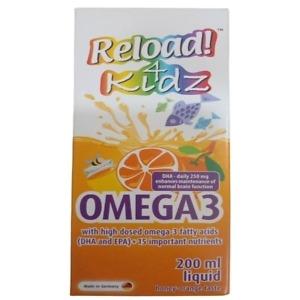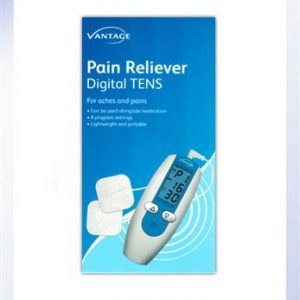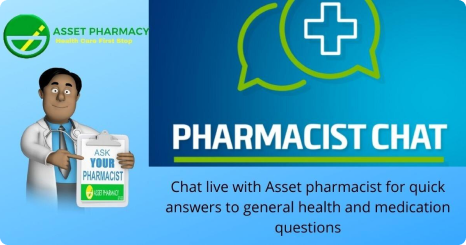Description
Symbicort 400 Turbohaler, 60 Doses
Symbicort 400 Turbohaler is an inhaler that is used to treat asthma in adults and adolescents aged 12-17 years. It is also used to treat the symptoms of Chronic Obstructive Pulmonary Disease (COPD) in adults aged 18 years and older. It contains two different medicines: budesonide and formoterol fumarate dihydrate.
- Budesonide belongs to a group of medicines called ‘corticosteroids’. It works by reducing and preventing swelling and inflammation in your lungs.
- Formoterol fumarate dihydrate belongs to a group of medicines called ‘long-acting beta2 adrenoceptor agonists’ or ‘bronchodilators’. It works by relaxing the muscles in your airways. This helps you to breathe more easily.
Asthma
For asthma, your doctor will prescribe two asthma inhalers: Symbicort Turbohaler and a separate ‘reliever inhaler’.
- Use Symbicort Turbohaler every day. This helps to prevent asthma symptoms from happening.
- Use your ‘reliever inhaler’ when you get asthma symptoms, to make it easier to breathe again.
Do not use Symbicort Turbohaler 400/12 as a ‘reliever inhaler’.
Symbicort Turbohaler can also be used to treat the symptoms of COPD in adults. COPD is a long-term disease of the airways in the lungs, which is often caused by cigarette smoking.
What is Asthma?
Asthma is a common lung condition that causes occasional breathing difficulties.
It affects people of all ages and often starts in childhood, although it can also develop for the first time in adults.
There\’s currently no cure, but there are simple treatments that can help keep the symptoms under control so it does not have a big impact on your life.
The main symptoms of asthma are:
- a whistling sound when breathing (wheezing)
- breathlessness
- a tight chest, which may feel like a band is tightening around it
- coughing
The symptoms can sometimes get temporarily worse. This is known as an asthma attack.
See a doctor if you think you or your child may have asthma.
Several conditions can cause similar symptoms, so it\’s important to get a proper diagnosis and correct treatment.
The GP will usually be able to diagnose asthma by asking about symptoms and carrying out some simple tests.
Find out more about how asthma is diagnosed.
Asthma is usually treated by using an inhaler, a small device that lets you breathe in medicines.
The main types are:
- reliever inhalers – used when needed to quickly relieve asthma symptoms for a short time
- preventer inhalers – used every day to prevent asthma symptoms happening
Some people also need to take tablets.
Asthma is caused by swelling (inflammation) of the breathing tubes that carry air in and out of the lungs. This makes the tubes highly sensitive, so they temporarily narrow.
It may happen randomly or after exposure to a trigger.
Common asthma triggers include:
- allergies (to house dust mites, animal fur or pollen, for example)
- smoke, pollution and cold air
- exercise
- infections like colds or flu
Identifying and avoiding your asthma triggers can help you keep your symptoms under control.
Asthma is a long-term condition for many people, particularly if it first develops when you\’re an adult.
In children, it sometimes goes away or improves during the teenage years, but can come back later in life.
The symptoms can usually be controlled with treatment. Most people will have normal, active lives, although some people with more severe asthma may have ongoing problems.
Although asthma can normally be kept under control, it\’s still a serious condition that can cause a number of problems.
What is COPD?
Chronic obstructive pulmonary disease (COPD) is the name for a group of lung conditions that cause breathing difficulties.
It includes:
- emphysema – damage to the air sacs in the lungs
- chronic bronchitis – long-term inflammation of the airways
COPD is a common condition that mainly affects middle-aged or older adults who smoke. Many people do not realise they have it.
The breathing problems tend to get gradually worse over time and can limit your normal activities, although treatment can help keep the condition under control.
SYMPTOMS OF COPD
The main symptoms of COPD are:
- increasing breathlessness, particularly when you\’re active
- a persistent chesty cough with phlegm – some people may dismiss this as just a \”smoker\’s cough\”
- frequent chest infections
- persistent wheezing
Without treatment, the symptoms usually get progressively worse. There may also be periods when they get suddenly worse, known as a flare-up or exacerbation.
CAUSES OF COPD
COPD happens when the lungs become inflamed, damaged and narrowed. The main cause is smoking, although the condition can sometimes affect people who have never smoked.
The likelihood of developing COPD increases the more you smoke and the longer you\’ve smoked.
Some cases of COPD are caused by long-term exposure to harmful fumes or dust. Others are the result of a rare genetic problem which means the lungs are more vulnerable to damage.
TREATMENTS FOR COPD
The damage to the lungs caused by COPD is permanent, but treatment can help slow down the progression of the condition.
Treatments include:
- stopping smoking – if you have COPD and you smoke, this is the most important thing you can do
- inhalers and medicines – to help make breathing easier
- pulmonary rehabilitation – a specialised programme of exercise and education
- surgery or a lung transplant – although this is only an option for a very small number of people
Symbicort 400 Turbohaler Reviews
After using Symbicort 400 Turbohaler, it\’s helpful to let others know about your experience. Reviews of an item help other users know that medicines received have helped the condition it is claimed for, how well the treatment worked or any issues to be aware of. We invite our users to leave a review of both their treatment and of the service provided. Click on the reviews tab to see if there has been feedback on this item.
Price of Symbicort 400 Turbohaler in Nigeria
Symbicort 400 Turbohaler is available on Asset Pharmacy Lagos Nigeria, Nigeria\’s Largest Online Pharmacy.
How to Use
- Always use this medicine exactly as your doctor has told you. Check with your doctor or pharmacist if you are not sure.
- It is important to use Symbicort Turbohaler every day, even if you have no asthma or COPD symptoms at the time.
- If you are using Symbicort Turbohaler for asthma, your doctor will want to regularly check your symptoms.
If you have been taking steroid tablets for your asthma or COPD, your doctor may reduce the number of tablets that you take, once you start to use Symbicort Turbohaler. If you have been taking oral steroid tablets for a long time, your doctor may want you to have blood tests from time to time. When reducing oral steroid tablets, you may feel generally unwell even though your chest symptoms may be improving. You might experience symptoms such as a stuffy or runny nose, weakness or joint or muscle pain and rash (eczema). If any of these symptoms bother you, or if symptoms such as headache, tiredness, nausea (feeling sick) or vomiting (being sick) occur, please contact your doctor immediately. You may need to take other medication if you develop allergic or arthritic symptoms. You should speak to your doctor if you are concerned as to whether you should continue to use Symbicort Turbohaler.
Your doctor may consider adding steroid tablets to your usual treatment during periods of stress (for example, when you have a chest infection or before an operation).
If you feel you are getting breathless or wheezy while using Symbicort Turbohaler, you should continue to use Symbicort Turbohaler but go to see your doctor as soon as possible, as you may need additional treatment.
Contact your doctor immediately if:
- Your breathing is getting worse or you often wake up at night with asthma.
- Your chest starts to feel tight in the morning or your chest tightness lasts longer than usual.
These signs could mean that your asthma or COPD is not being properly controlled and you may need different or additional treatment immediately.
Use your Symbicort Turbohaler 400/12 every day. This helps to prevent asthma symptoms from happening.
Adults (18 years and above)
- The usual dose is 1 inhalation, twice a day.
- Your doctor may increase this to 2 inhalations, twice a day.
- If your symptoms are well controlled, your doctor may ask you to take your medicine once a day.
Adolescents (12 to 17 years)
- The usual dose is 1 inhalation, twice a day.
- If your symptoms are well controlled, your doctor may ask you to take your medicine once a day.
A lower strength of Symbicort Turbohaler is available for children aged from 6 to 11 years.
Symbicort Turbohaler is not recommended to be used in children who are younger than 6 years.
Your doctor (or asthma nurse) will help you to manage your asthma. They will adjust the dose of this medicine to the lowest dose that controls your asthma. However, do not adjust the dose without talking to your doctor (or asthma nurse) first.
Use your separate ‘reliever inhaler’ to treat asthma symptoms when they happen. Always keep your ‘reliever inhaler’ with you to use when you need it. Do not use Symbicort Turbohaler 400/12 to treat asthma symptoms – use your separate ‘reliever inhaler’.
- Only to be used by adults (aged 18 years and above).
- The usual dose is 1 inhalation twice a day.
Your doctor may also prescribe other bronchodilator drugs, for example anticholinergics (such as tiotropium or ipratropium bromide) for your COPD disease.
Before using your new Symbicort Turbohaler for the first time, you need to prepare it for use as follows:
- Unscrew the cover and lift it off. You may hear a rattling sound.
- Hold your Turbohaler upright with the red grip at the bottom.
- Turn the red grip as far as it will go in one direction. Then turn it as far as it will go in the other direction (it does not matter which way you turn it first). You should hear a click sound. It does not matter whether the click comes on the first or the second twist.
- Do this again, turning the red grip in both directions.
- Your Turbohaler is now loaded and ready for use.
Every time you need to take an inhalation, follow the instructions below.
1. Unscrew the cover and lift it off. You may hear a rattling sound.
2. Hold your Turbohaler upright with the red grip at the bottom.
3. Do not hold the mouthpiece when you load your Turbohaler. To load your Turbohaler with a dose, turn the red grip as far as it will go in one direction. Then turn it as far as it will go in the other direction (it does not matter which way you turn it first). You should hear a click sound. It does not matter whether the click comes on the first or the second twist. Your Turbohaler is now loaded and ready to use. Only load your Turbohaler when you need to use it.
4. Hold your Turbohaler away from your mouth. Breathe out gently (as far as is comfortable). Do not breathe out through your Turbohaler.
5. Place the mouthpiece gently between your teeth. Close your lips. Breathe in as deeply and as hard as you can through your mouth. Do not chew or bite on the mouthpiece.
6. Remove your Turbohaler from your mouth. Then breathe out gently. The amount of medicine that is inhaled is very small. This means you may not be able to taste it after inhalation. If you have followed the instructions, you can still be confident that you have inhaled the dose and the medicine is now in your lungs.
7. If you are to take a second inhalation, repeat steps 2 to 6.
8. Replace the cover tightly after use.
9. Rinse your mouth with water after your daily morning and/or evening doses, and spit it out.
Do not try to remove or twist the mouthpiece. It is fixed to your Turbohaler and must not be taken off. Do not use your Turbohaler if it has been damaged or if the mouthpiece has come apart from your Turbohaler.
As with all inhalers, caregivers should ensure that children prescribed Symbicort Turbohaler use correct inhalation technique, as described above.
Wipe the outside of the mouthpiece once a week with a dry tissue. Do not use water or liquids.
- The dose indicator tells you how many doses (inhalations) are left in your Turbohaler, starting with 60 doses when it is full.
- The dose indicator is marked in intervals of 10 doses. Therefore, it does not show every dose.
- When you first see a red mark at the edge of the indicator window, there are approximately 20 doses left. For the last 10 doses, the background of the dose indicator is red. When the ‘0’ on the red background has reached the middle of the window, you must start using your new Turbohaler.
Note:
- The grip will still twist and ‘click’ even when your Turbohaler is empty.
- The sound that you hear as you shake your Turbohaler is produced by a drying agent and not the medicine. Therefore, the sound does not tell you how much medicine is left in your Turbohaler.
- If you load your Turbohaler more than once by mistake before taking your dose, you will still only receive one dose. However, the dose indicator will register all the loaded doses.
It is important that you take your dose as stated on the pharmacist’s label or as advised by your doctor. You should not exceed your prescribed dose without seeking medical advice.
The most common symptoms that may occur if you use more Symbicort Turbohaler than you should are trembling, headache or a rapid heart beat.
- If you forget to take a dose, take it as soon as you remember. However, if it is nearly time for your next dose, skip the missed dose.
- Do not take a double dose to make up for a forgotten dose.
If you have any further questions on the use of this medicine, ask your doctor or pharmacist.
Product Details
- if you are allergic to budesonide, formoterol or the other ingredient of this medicine (listed in section 6), which is lactose (which contains small amounts of milk protein).
Talk to your doctor or pharmacist before using Symbicort Turbohaler if:
- You are diabetic.
- You have a lung infection.
- You have high blood pressure or you have ever had a heart problem (including an uneven heart beat, a very fast pulse, narrowing of the arteries or heart failure).
- You have problems with your thyroid or adrenal glands.
- You have low levels of potassium in your blood.
- You have severe liver problems.
Contact your doctor if you experience blurred vision or other visual disturbances.
Tell your doctor or pharmacist if you are using, have recently used or might use any other medicines.
In particular, tell your doctor or pharmacist if you are using any of the following medicines:
- Beta-blocker medicines (such as atenolol or propranolol for high blood pressure), including eyedrops (such as timolol for glaucoma).
- Medicines for a fast or uneven heart beat (such as quinidine).
- Medicines like digoxin, often used to treat heart failure.
- Diuretics, also known as ‘water tablets’ (such as furosemide). These are used to treat high blood pressure.
- Steroid medicines that you take by mouth (such as prednisolone).
- Xanthine medicines (such as theophylline or aminophylline). These are often used to treat asthma.
- Other bronchodilators (such as salbutamol).
- Tricyclic anti-depressants (such as amitriptyline) and the anti-depressant nefazodone.
- Phenothiazine medicines (such as chlorpromazine and prochlorperazine).
- Medicines called ‘HIV-protease inhibitors’ (such as ritonavir) to treat HIV infection.
- Medicines to treat infections (such as ketoconazole, itraconazole, voriconazole, posaconazole, clarithromycin and telithromycin).
- Medicines for Parkinson’s disease (such as leva-dopa).
- Medicines for thyroid problems (such as levo-thyroxine).
If any of the above applies to you, or if you are not sure, talk to your doctor or pharmacist before using Symbicort Turbohaler.
Also tell your doctor or pharmacist if you are going to have a general anaesthetic for an operation or for dental work.
- If you are pregnant, or planning to get pregnant, talk to your doctor before using Symbicort Turbohaler – do not use Symbicort Turbohaler unless your doctor tells you to.
- If you get pregnant while using Symbicort Turbohaler, do not stop using Symbicort Turbohaler but talk to your doctor immediately.
- If you are breast-feeding, talk to your doctor before using Symbicort Turbohaler.
Symbicort Turbohaler has no or negligible effect on your ability to drive or to use tools or machines.
Symbicort Turbohaler contains lactose, which is a type of sugar. If you have been told by your doctor that you have an intolerance to some sugars, talk to your doctor before using this medicine. The amount of lactose in this medicine does not normally cause problems in people who are lactose intolerant.
The excipient lactose contains small amounts of milk proteins, which may cause allergic reactions.
Patient information leaflet
Side Effects
Like all medicines, this medicine can cause side effects, although not everybody gets them.
- Swelling of your face, particularly around your mouth (tongue and/or throat and/or difficulty to swallow) or hives together with difficulties to breathe (angioedema) and/or sudden feeling of faintness. This may mean that you are having an allergic reaction. This happens rarely, affecting less than 1 in 1,000 people.
- Sudden acute wheezing or shortness of breath immediately after using your inhaler. If either of these symptoms occur, stop using your Symbicort Turbohaler straightaway and use your ‘reliever’ inhaler. Contact your doctor immediately as you may need to have your treatment changed. This happens very rarely, affecting less than 1 in 10,000 people.
Common (may affect up to 1 in 10 people)
- Palpitations (awareness of your heart beating), trembling or shaking. If these effects occur, they are usually mild and usually disappear as you continue to use Symbicort Turbohaler.
- Thrush (a fungal infection) in the mouth. This is less likely if you rinse your mouth out with water after using your Symbicort Turbohaler.
- Mild sore throat, coughing and a hoarse voice.
- Headache.
- Pneumonia (infection of the lung) in COPD patients.
Tell your doctor if you have any of the following while taking Symbicort Turbohaler, they could be symptoms of a lung infection:
- Fever or chills.
- Increased mucus production, change in mucus colour.
- Increased cough or increased breathing difficulties.
Uncommon (may affect up to 1 in 100 people)
- Feeling restless, nervous or agitated.
- Disturbed sleep.
- Feeling dizzy.
- Nausea (feeling sick).
- Fast heart beat.
- Bruising of the skin.
- Muscle cramps.
- Blurred vision.
Rare (may affect up to 1 in 1,000 people)
- Rash, itching.
- Bronchospasm (tightening of the muscles in the airways which causes wheezing). If the wheezing comes on suddenly after using Symbicort Turbohaler stop using Symbicort Turbohaler and talk to your doctor immediately.
- Low levels of potassium in your blood.
- Uneven heart beat.
Very rare (may affect up to 1 in 10,000 people)
- Depression.
- Changes in behaviour, especially in children.
- Chest pain or tightness in the chest (angina pectoris).
- An increase in the amount of sugar (glucose) in your blood.
- Taste changes, such as an unpleasant taste in the mouth.
- Changes in your blood pressure.
Inhaled corticosteroids can affect the normal production of steroid hormones in your body, particularly if you use high doses for a long time. The effects include:
- changes in bone mineral density (thinning of the bones)
- cataract (clouding of the lens in the eye)
- glaucoma (increased pressure in the eye)
- a slowing of the rate of growth of children and adolescents
- an effect on the adrenal gland (a small gland next to the kidney).
These effects are much less likely to happen with inhaled corticosteroids than with corticosteroid tablets.
Ingredients
The active substances are budesonide and formoterol fumarate dihydrate. Each inhaled dose contains 320 micrograms of budesonide and 9 micrograms of formoterol fumarate dihydrate, this corresponds to a metered dose of 400 micrograms of budesonide and 12 micrograms of formoterol fumarate dihydrate.
The other ingredient is lactose monohydrate (which contains milk proteins).
Delivery
Delievry time are estimates. Can vary due to the time of day you order.
Delivery time estimate are subject to the courier company.
Shipping to Lagos cost starts from N1850 Next day delivery
Shipping to Rest Of Nigeria – 2-3 days cost starts from N2000
Shipping to Rest of Africa – 5-7 working days Cost starts from N12000
Shipping to Europe 7 – 14 working days Cost srats from N18000
Shipping to Rest of the world – 7 – 14 days Cost starts from N18000









